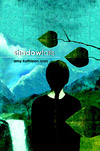
When I was a kid in the 1970s, a hoodie called up images of heroic athletes working to overcome crushing odds to better themselves and win the day. Rocky Balboa wore his hooded sweatshirt as he ran up the 72 steps of the Philadelphia Museum of Art, accompanied by a choir of singers belting out, "Feeling strong now!!" This was back when Sylvester Stalone made great movies.
When people wore a hoodie in the 1970's it meant they were working hard to better themselves, sweating it out, getting strong.
But somewhere along the line, hoodies started to mean this:
If you do an internet search that pairs the words, 'hoodie,' with 'crime,' you find that lots of criminals wear hoodies. This is logical, given that the hoodie can obscure your face from a security camera, and make you hard to identify in a line-up if you're caught. A hoodie can be useful if you're up to no good.

But that's not why most of us wear hoodies. I've got one, and I wear it when I go running because I can put up the hood during my warm-up on a cold day, and then once I'm sweating, I can flip it back and I feel cooler. I can unzip the front and get cooler still. When I'm done with my run, I can bundle up again on my walk home. If it starts to rain on me, my hood provides a little shelter. My hoodie is warm, and comfy, and it's one of the most useful, versatile pieces of clothing I own.
I bet that's how Trayvon Martin felt about his hoodie. He was the unarmed teenage boy who, in February of 2012, went to a 7-Eleven to buy iced tea and Skittles, only to be shot and killed by George Zimmerman.
Throughout the media circus that followed, we heard countless mentions of Martin's hoodie. Geraldo Rivera famously sai
d, "I think the hoodie is as much responsible for Trayvon Martin’s death as George Zimmerman was.” (Read more: http://www.politico.com/news/stories/0312/74392.html#ixzz2thsLEE1L) Rivera, perhaps hearing the mistake he'd made, tried to explain himself: "
It’s those crime scene surveillance tapes. Every time you see someone sticking up a 7-Eleven, the kid’s wearing a hoodie. Every time you see a mugging on a surveillance camera or they get the old lady in the alcove, it’s a kid wearing a hoodie. You have to recognize that this whole stylizing yourself as a gangsta — you’re going to be a gangsta wannabe? Well, people are going to perceive you as a menace." Even if Rivera's intentions had been to advise young men to protect themselves, the logic is right there in his words: Dark Skin + Hoodie = Danger.
One has to wonder if that was George Zimmerman's logic, too.
It wasn't just Rivera making the connection. Hundreds of hooded images of Martin were paraded about, many of them less than flattering, or downright slanderous:
Martin did NOT steal the Skittles. Here's a link to the surveillance video of him buying them from the clerk the night he died:
http://www.youtube.com/watch?v=-W34pSMfM6g
There was conjecture that Martin may have been involved in some burglaries, though he was never charged, and it was never proven that the items in his possession had actually been stolen. He'd been suspended for having marijuana paraphernalia in his school locker, but he did not have a juvenile record. It's especially important to note that Martin did not approach Zimmerman in any way. Zimmerman disregarded the advice of the police dispatcher he was on the phone with, followed Martin, confronted him, and when Martin got scared, or angry, or both, and tried to defend himself, Zimmerman shot him. Tragically, needlessly, the boy died.
We all know what happened next. George Zimmerman pleaded self defense, and was found not guilty.
In the wake of the grief and outrage that followed, one must ask the question: Why did the the negative details about Trayvon Martin's past
even come up? Why was the hoodie itself so hotly debated? They were irrelevant to the case, but Martin's past indiscretions and wardrobe choice seemed to be on trial just as much as George Zimmerman was. At the end of it all, looking at the way Martin's image was scrutinized in the media, and how Zimmerman was shockingly let off the hook for his murder, one might conclude:
If you are a young black man in America and you're shot down, you have to be a saint for your murderer to be convicted. And you better not be wearing a hoodie.
And that, my friends, is what oppression looks like.
Link to
The Million Hoodies Movement.



























